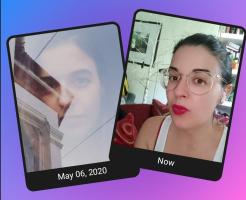Copy Link
Add to Bookmark
Report
SURFPUNK Technical Journal 053

Date: Tue, 9 Feb 93 18:39:20 PST
Reply-To: <surfpunk@osc.versant.com>
Return-Path: <cocot@osc.versant.com>
Message-ID: <surfpunk-0053@SURFPUNK.Technical.Journal>
Mime-Version: 1.0
Content-Type: text/plain
From: surfpunk@osc.versant.com (ol cerffvat qbja n fcrpvny xrl vg cynlf n yvggyr zrybql)
To: surfpunk@osc.versant.com (SURFPUNK Technical Journal)
Subject: [surfpunk-0053] DIGEST: MIDI Condom, Psyche (research on consciousness)
Keywords: surfpunk, Psyche, Shannons, Paul Lyons
+ + It reassures me that Time Magazine
+ + completely misquoted me. -- hakim bey
$ ls -l
-- MIDI Condom -- details (long)
-- Psyche: A new electronic journal
-- [surfpunk Timothy Newsham] Re: [surfpunk-0052] DIGEST:
-- [cypherpunk Peter Wayner] Convincing people the value of anonymity...
-- [cypherpunk Phil Karn] Re: Compressed/Encrypted Voice using Modems
$ cat *
________________________________________________________________________
________________________________________________________________________
Sender: Jason Asbahr <Asbahr@UH.EDU>
Subject: MIDI Condom -- details (long)
Newsgroups: rec.music.makers.synth
From: archer@elysium.esd.sgi.com (Archer Sully)
Keywords: I'm not making this up
Date: Mon, 8 Feb 93 20:17:57 GMT
I came up with this idea a few months ago, but someone beat me to it.
Presented with neither comment nor permission....
>From the San Jose Mercury News, 2/7/'93
SONG IN YOUR HEART ISN'T ENOUGH? TRY THE MUSICAL CONDOM
by Susan Q. Stranahan
Paul Lyons is a proud guy, a guy who had a dream, pursued it and
trumphed.
And while half of him wants the world to know of his
accomplishment, the other half's not so sure.
See, Paul Lyons also is a shy guy. And his triumph came in
November when he was awarded U.S. Patent No. 5,163,447.
For a musical condom.
Or, as the patent reads, a "force-sensitive, sound-playing
condom."
With the exception of his brother, his attorney and a few close
friends, Lyons, of Southbridge, Mass., hasn't told anyone of his
invention.
"Even if I made a million dollars off it, I probably wouldn't
want to go around telling everyone I've succeeded in this area,"
he said the other day. "It's enough just for me to know it."
Keeping the lid on his succes may prove somewhat diffficult. His
name and address were published with the patent certificate.
He's already gotten calls from regular readers of the Patent
Official Gazette, the federal register of patents issued.
"Most of them were lawyers who wanted to know where they could
buy the condoms, " said Lyons.
Attention: Productions has yet to begin. Lyons is still looking
for a manufacturer. So don't loook for the condoms until summer
of fall -- at the very soonest.
That hasn't deterred some other eager entrepreneurs.
Lyons recently got a call from a company that -- for a price --
would reproduce a copy of his patent certificate, complete with
detailied diagram of the condom, on a lampshade.
He declined.
There's a part of Paul Lyons -- who politely declines to provide
his occupation or even his age -- that chafes at this
self-imposed anonymity. He sees himself fulfilling the American
dream -- 1990's version -- of using his wits to get ahead.
"What does a person have if he doesn't have millions of
dollars?" he asked the other day. "He has his ability and his
intelligence."
MOTHER OF INVENTION
"My motto is 'Find a need and fill it.' THat's what I did," he
said.
Frankly, Lyons marvels that somebody hadn't already invened a
musical condom.
"It seems so simple," he said. "I was sure somebody had already
done it." Like other great inspirations, it grew out of a casual
conversation.
"A friend and I were talking about the recession and different
ways of making money," Lyons explained. "I thought about it for
a few days and made a list. The invention has to be something
inexpensive, something the majority of people can afford and
that the majority of people would find appealing in some way."
There were other considerations.
"You need something with a good amount of planned obsolescence,m
something that';s not going to last 100 years or so, something
that will have a quick turnover."
In other words, something like a condom -- an item people will
buy, use, throw away, and buy some more.
The musical condom -- he's still working on a jcatchy name --
wasn't Lyons' first invention idea. He actually wanted to patent
small containers to house cladiolus bulbs to make them easier to
plant in the spring and remove each fall after blooming.
THree or four people already had that idea, he discovered.
Nobody, however, had thought of assembling a "miniature
piezo-electric sound transducer, a microchip which controls the
operation of (the) transducer, a powersupplying dry-cell battery
and a switch."
When pressure is applied to the rim of the condom containing the
tiny circuitry, the transducer emits "a predetermined melody, or
a voice message," according to the patent.
FLEXIBLE TIMING
The patent continues: "The music or voice message may be played
once, or it may be repeated continuously for several minutes to
coincide with the duration of coitus.
"A voiced message may be a warning about safe sex, or a
compliment to the couple for using a condom. Suitable melodies
-- if music is played -- may be `The 1812 Overture,' `Ode to
Joy,' ... or any popular love song."
Those are only suggestions, of course. Lyons said the number of
condom tunes is mind-boggling.
"Once you start thinking, you can't stop," he said.
His attorney likes Peggy Lee's "Is That All There Is?" Lyons
likes "Born To Be Wild."
It has taken Lyons several years to get this far in his quest to
produce the musical condom. It hasn't been easy.
"What held me up for a long time was finding the musical
component," he said. "You can't believe the phone bills I ran
up. Finally, everyone said I had to go to the Orient to find it,
which I did not want to do. I wanted to stay in America."
But one call to a Hong Kong trade association and Lyons had the
names of 10 Asian companies that could provide the tiny sound
unit, similar to the type used in audio greeting cards.
That wasn't the end, however. Consider the matmter of volume.
"The speaker has to large enough and powerful enough to eb heard
over the, uh, background noise -- but not heard in the next
room," he said.
"And you have to look at liability. The battery in it would be
so low in terms of producing current."
The, of course, there was the question of "prior art," as the
patent office refers to it. That required extensive research to
prove that nobody else had laid claim to the musical condom.
The only apparent competition was an item in the 1990 Fredericks'
of Hollywood catalog called the "Wedding Surprise," which the
modest Lyons has difficulty describing in detail except to say
that it was a musical undergarment.
Patent examiners apparently checked the catalog and didn't regard
the item as a threat to Lyons' claim.
Lyons hopes his condom wwill sell for $3.50 to $5, and is
confident there is a market.
________________________________________________________________________
Subject: Psyche: A new electronic journal
From: X91007@phillip.edu.au
To: future-digest@nyx.cs.du.edu
Date: Tue, 9 Feb 1993 23:23 EST
PSYCHE
an interdisciplinary journal of research on consciousness
Psyche is a refereed electronic journal dedicated to supporting the
interdisplinary exploration of the nature of consciousness and its relation to
the brain. Psyche publishes material relevant to that exploration from the
perspectives afforded by the disciplines of Cognitive Science, Philosophy,
Psychology, Neuroscience, Artificial Intelligence and Anthropology.
Interdisciplinary discussions are particularly encouraged.
Psyche publishes a large variety of articles and reports for a diverse
academic audience four times per year. As an electronic journal, the usual
space limitations of print journals do not apply; however, the editors request
that potential authors do not attempt to abuse the medium. Psyche also
publishes a hardcopy version simultaneously with the electronic version. Long
articles published in the electronic version may be abbreviated, synopsized or
eliminated from the hardcopy version.
The journal publishes from time to time all of the following varieties of
articles. Many of these (as indicated below) are peer reviewed; all of them
are reviewed by editorial staff.
Research Articles___report original research by the author(s).
Articles may be either purely theoretical or experimental or some
combination of the two. Articles of special interest occasionally
will be followed by a selection of peer commentaries. Peer reviewed.
Survey Articles___report the state of the art in some area(s) of
research. These may be done in the form of a literature review or
annotated bibliography. More ambitious surveys will be peer reviewed.
Discussion Notes___critique previous research. Peer reviewed.
Tutorials___introduce a subject area relevant to the study of
consciousness to non-specialists.
Letters___provide an informal forum for expressing opinions on
editorial policy or upon material previously published in Psyche.
Screened by the editorial staff.
Abstracts___summarize the contents of recently published journal
articles, books, and conference proceedings.
Book Reviews___give an indication of the contents of recent books
and evaluate their merits as contributions to research and/or as
textbooks.
Announcements___of forthcoming conferences, paper submission
deadlines, etc.
Advertisements___of immediate interest to our audience will be
published: grants available; positions available; journal contents;
proposals for joint research; etc.
Notes for authors
Unsolicited submissions of original works within any of the above
categories are welcome. Prospective authors should send articles directly to
the executive editor. Submissions should be in a single copy of plain (ASCII)
text if submitted electronically or four (4) copies if submitted by mail.
Submitted matter should be preceded by: the author's name; address;
affiliation; telephone number; electronic mail address. Any submission to be
peer reviewed should be preceded by a 100-200 word abstract as well. Note
that peer review will be blind, meaning that the prefatory material will not
be made available to the referees. In the event that an article needs to be
shortened for publication in the print version of Psyche the author will be
responsible for making any alterations requested by the editors.
Any figures required should be designed so as to be in screen-readable
ASCII. If that cannot be arranged, figures should be submitted as separate
postscript files so that they can be printed out by readers locally.
Authors of accepted articles assign to Psyche the right to publish the
text both electronically and as printed matter and to make it available
permanently in an electronic archive. Authors will, however, retain copyright
to their articles and may republish them in any forum they want so long as
they clearly acknowledge Psyche as the orginal source of publication.
Subscriptions
Subscriptions to the electronic version of Psyche may be initiated by
sending the "SUBSCRIBE PSYCHE-L Your Name" one-line command (without quotes)
in the body of an electronic mail message to LISTSERV@NKI.BITNET (or
LISTSERV%NKI.BITNET@cunyvm.cuny.edu). For general information on LISTSERV send
the command "INFO PR" or "INFO ?" Subscriptions to the print version may be
initiated by contacting the executive editor; a nominal fee will be required to
cover printing and mailing costs.
Archival
Electronic back issues of Psyche will be availabe by anonymous ftp at
(location to be determined). Back issues of the print version are available
for a nominal fee from the executive editor.
Assistance
Anyone who wishes to participate in the production of this
journal whether volunteering subject matter expertise or helping with layout
or proofreading please contact the executive editor.
Book Reviews
Please send books to be considered for review to Kevin B. Korb, Dept. of
Computer Science, Monash University, Clayton, Victoria 3168, Australia. Fax:
(03) 565-5146.
Executive Editor:
Patrick Wilken
Royal Melbourne Institute of Technology
Bundoora, Victoria 3083
AUSTRALIA
x91007@phillip.edu.au
(03) 388-2347
Associate Editors:
George Buckner
GRB%NCCIBM1.BITNET@ncsuvm.cc.ncsu.edu
Adam Burns
adamb@peg.pegasus.oz.au
David Casacuberta
Universidad Autonoma de Barcelona
Barcelona
SPAIN
ILFF3@ccab1.uab.es
Kevin B. Korb
Dept. of Computer Science
Monash University
Clayton, Victoria 3168
AUSTRALIA
korb@bruce.cs.monash.edu.au
(03) 565-5198
Evelyn Mitchell
Dept. of Philosophy
University of Saskatchewan
CANADA
mitchelle@sask.usask.ca
Juan A. Siguenza
Instituto de Ingenieria del Conocimiento
Universidad Autonoma de Madrid
Madrid
SPAIN
siguenza@emdcci11.bitnet
Stuart Watt
Human Cognition Research Laboratory
Open University
Walton Hall
Milton Keynes, MK7 6AA
UNITED KINGDOM
S.N.K.Watt@open.ac.uk
Editorial Board:
Ben Bradley <bhbsb@marlin.jcu.edu.au>
________________________________________________________________________
From: Timothy Newsham <newsham@wiliki.eng.hawaii.edu>
Subject: Re: [surfpunk-0052] DIGEST:
To: surfpunk@osc.osc.com
Date: Tue, 9 Feb 93 11:18:28 HST
> ...On real-time voice encoding:
>
> I was thinking of this tonight, before reading about it in the SurfPunk
> Journal. Must be some type of synchronicity. Anyway, Macintoshes
> support 4.4kHz as a standard recording rate-not good, but about the
> bandwidth of telephone lines, correct? The Mac also supports a number
> of standard compression ratios, up to at least 6:1; this would drop the
> data volume to about 750 bps- below v.32. Add in a custom compressor
> (perhaps Quicktime can do this right now-they have some impressive
> compression ratios for video for near-real-time
> compression/decompression, based mostly on disk access time than on
> anything else) and a very simple encoding scheme (I don't think that
> with a non-standard compression scheme that even a very simple code
> could easily be broken to create a recognizable file, perhaps the NSA
> with their huge computers could but it's probably beyond the reach of
> most local/state/national government agents.) and I think the
> technology is either here today for this, or will be within the next
> year. As a matter of fact, I wouldn't be surprised to see modems with
> this capability coming on the market RealSoonNow, if it is indeed legal
> under the Digital Telephony Bill (I'm not sure about the details of
> this bill.)
the bandwidth of a fone line (and most voice signals) is about
4khz, this corresponds to a "recording rate" (sampling rate) of
8000 samples/second. Each sample is a full word, probably 8 bits
(maybe 16 on mac?) wide. The voice line uses a sampling frequency
of 8 kHz and 8 bit (companded) samples . They also "throw-out"
a few bits here and there to use for other purposes (effectively
just adds some more noise to the channel). I dont think the
samples on a mac are companded (amiga's samples are not).
Companding has the effect that the SNR of small signals will
be almost the same as the SNR for larger signals. On an Amiga
you will have very poor SNR for small samples. Best SNR is
achieved by using the full range of the digitizer on such systems.
At any rate, 8 bit non-companded will not sound nearly as good
as companded.
________________________________________________________________________
From: wayner@cs.cornell.edu (Peter Wayner)
Subject: Convincing people the value of anonymity...
Date: Tue, 9 Feb 93 08:20:54 -0500
To: cypherpunks@toad.com
I would think that many people who hang out on technical
newsgroups would be very familiar with the anonymous review
procedures practiced by academic journals. There is some value
when a reviewer can speak their mind about a paper without
worry of revenge. Of course everyone assures me that the system is never
really anonymous because there are alwys only three or four people qualified
to review each paper. :-)
Perhaps we should go out of our way to make anonymous, technical
comments about papers and ideas in the newsgroups to fascilitate
the development of an anonymous commenting culture in cypberspace.
-Peter Wayner
________________________________________________________________________
From: Phil Karn <karn@qualcomm.com> (Phil Karn)
Subject: Re: Compressed/Encrypted Voice using Modems
Cc: cypherpunks@toad.com
Date: Mon, 8 Feb 93 09:46:42 -0800
Sounds like we need a new unit that specifically means "bits/sec" but
is easier to say. How about "Shannons", as in "I just bought a 14.4
kiloshannon modem". :-)
Phil
________________________________________________________________________
The SURFPUNK Technical Journal is a dangerous multinational hacker zine
originating near BARRNET in the fashionable western arm of the northern
California matrix. Quantum Californians appear in one of two states,
spin surf or spin punk. Undetected, we are both, or might be neither.
________________________________________________________________________
Send postings to <surfpunk@osc.versant.com>, subscription requests
to <surfpunk-request@osc.versant.com>. MIME encouraged.
Xanalogical archive access soon. Beam ourselves into the future.
________________________________________________________________________
________________________________________________________________________






















